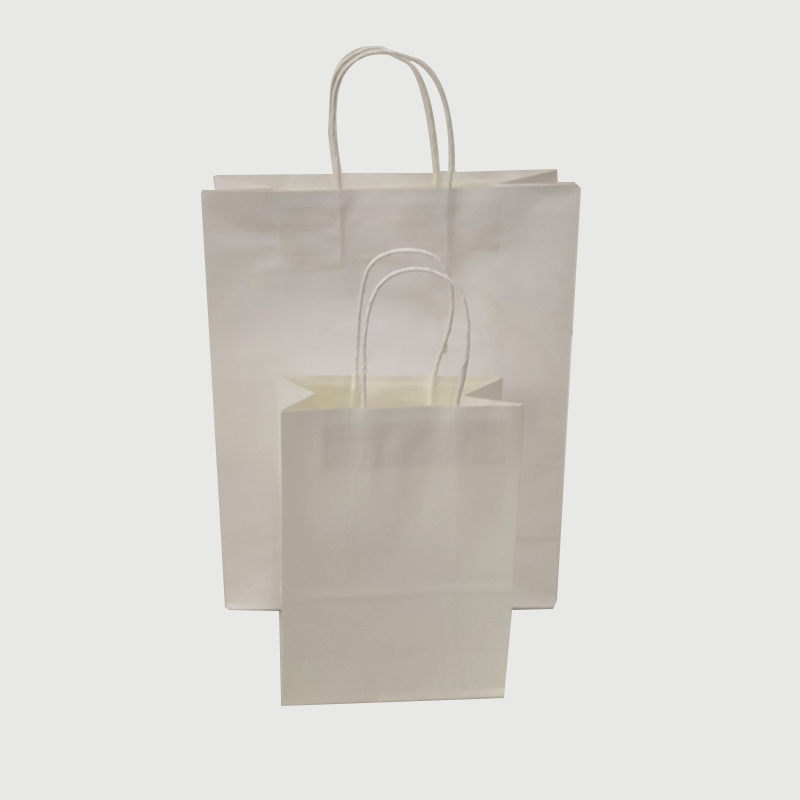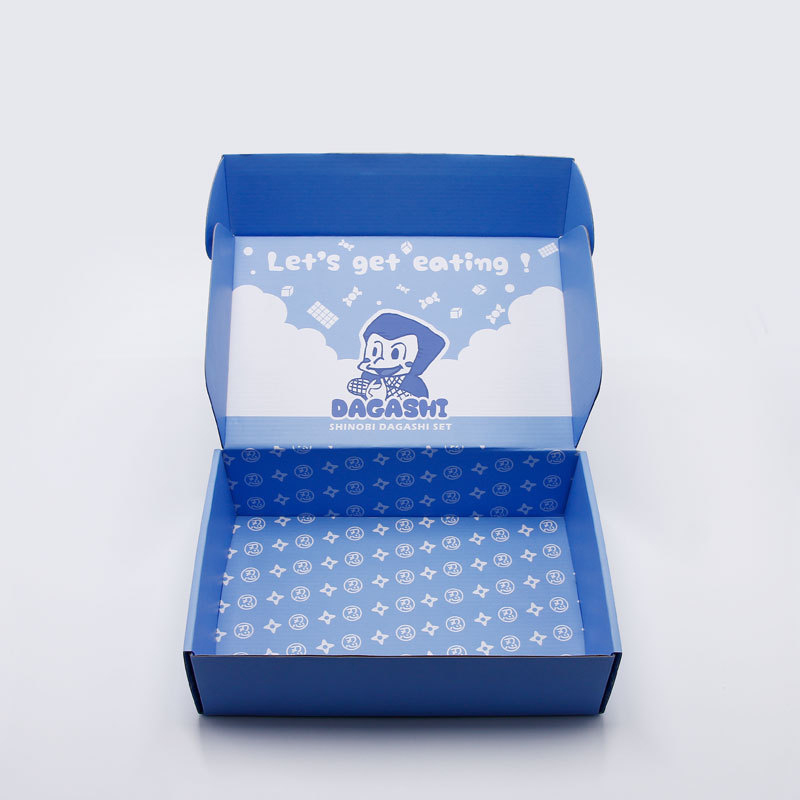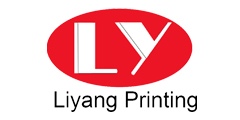With the development of science and technology, especially since the industrial revolution of the 17th century, great achievements have been made in natural transformation and economic development. However, in the rapidly developing global economic civilization, there are also negative effects of uncivilization. The treatment measures in the industrialization process are not appropriate, especially the unreasonable exploitation and utilization of natural resources, and the lack of attention to the treatment of waste gas, waste water, and waste generated during the industrialization process. As a result, the lack of resources on the earth, the shortage of energy, and the environment Deteriorating, seriously endangering the ecological space of the earth and the sustainable development of the world economy.
Some of the raw materials in the packaging industry are processed into packaging products, and the other part is inevitably converted into waste. Therefore, green packaging becomes more and more important. Combining the characteristics of paper products, how can we not only exert the advantages of paper products but also reduce the waste discharged into the environment in the production process of paper products packaging industry to the bottom, And in the production process, the recycling of waste disposal and waste paper products packaging has become a subject worthy of research and discussion.
First, the introduction of green packaging paper products
1.1 Overview of Green Packaging
At present, green packaging should have the following meanings:
(1) Implementation of packaging reduction The green packaging should use the least appropriate packaging under the conditions of protection, convenience, and sales. Europe and the United States and other countries listed packaging reduction as the first choice for the development of non-hazardous packaging.
(2) The package should be easily reused or recycled. Reuse is achieved through repeated use or recycling of waste, production of recycled products, incineration of heat energy, composting of soil, and other measures. It neither pollutes the environment nor makes full use of resources.
(3) The packaging waste can be degradable to form no permanent waste, and non-recyclable packaging waste can be decomposed and destroyed to achieve the purpose of improving the soil. Currently, all industrial countries in the world attach importance to the development and utilization of bio-photo-degradable packaging materials.
"Reduce", "reuse", "recyle" and "degradable" are the "3R, 1D" principles for the development of green packaging recognized by all countries in the world.
(4) Packaging materials should be non-toxic and harmless to humans and organisms. Packaging materials should not contain toxic elements, halogens, heavy metals, or inclusions that should be controlled below relevant standards.
(5) During the entire life cycle of packaging products, no pollution shall be caused to the environment. That is to say, the packaging products are collected from raw materials, processed materials, manufactured products, used products, and recycled and recycled to the final disposal process. Deal with human and environmental hazards.
Through the above description, we can make the following definition of green packaging: Recyclable reuse, recycling or degradation of corruption, and in the entire life cycle of the product does not cause harm to the human body and the environment of appropriate packaging, known as green packaging.
1.2 Overview of the Characteristics of Paper Product Packaging
1. Cheap, economical savings
Paper and paperboard are rich in raw materials, widely sourced, and easy to be mass-produced, with low production costs. The same packaging box, using wood directly to make wood directly into a wooden box compared to the paper made of paper into a cardboard box, the carton material is only about 1/3 of the wooden box, so save on wood and costs. The cartons are lightweight, about 15% of the wooden boxes, which can reduce packaging costs and transportation costs.
2. Good protection performance
Compared with packaging containers of other materials, paper containers have relatively strong cushioning and shock absorbing properties. The structure of the carton is tight and seamless, so it can be shaded and dustproof. Due to the adoption of many new processes and the development of new varieties, cartons are comparable to wooden boxes in terms of strength, stiffness, and moisture resistance.
3. High production flexibility
Paper can be cut, folded, easy to stick, easy to nail, suitable for mechanical processing and automated production; can also be a small-scale non-mechanized production, or even manual production.
4. Convenient storage and transportation
Paper containers are lightweight, foldable, and easy to load and bundle. They are also easier to handle and store.
5. Easy to shape and decorate
Paper products can be designed in various types of boxes and boxes based on different products. Paper and paperboard have a good performance of absorbing ink and paint, printing performance is good, the printed characters are clear, the patterns are clear, firm and exquisite, and the function of packaging promotion can be well displayed.
6. Does not contaminate the contents
The paper is hygienic, non-toxic and odorless. The carton can be completely sealed, so it will not contaminate the contents. The paper can also meet the storage conditions of respiration products.
7. Good recycling
The paper can be directly recycled or reused in waste paper to produce no pollution to the environment. Paper product packaging is environmentally friendly packaging.
1.3 Environmental Performance of Paper Packaging
With a large amount of paper packaging, in the countries with advanced packaging in the world, paper packaging accounts for half of the total packaging volume and plays a decisive role in the packaging industry.
Due to the characteristics of non-toxic, odorless, breathable, etc., paper packaging can not only pollute the inner packaging, but also maintain the respiration of the inner packaging and achieve better storage conditions; at the same time, the paper packaging is easy to recycle and is easy to use in nature. Decomposition, does not pollute the environment; paper packaging production of raw materials also comes from renewable wood and plant stems, so from a general perspective, the green performance of paper packaging is good, is an environmentally friendly packaging, is sustainable development Industry. With the increasing emphasis on environmental protection and the recycling of resources in the world today, paper packaging has shown its vitality due to its advantages of easy degradation, easy recycling, and easy regeneration. Paper, wood, and paper-based plastic packaging products continue to emerge. The amount of paper on the packaging is also increasing.
Second, the paper product packaging production and waste paper recycling green analysis
2.1 The main sources of pollution in paper production and the main links in cleaner production
The most important pollution in paper production is generated during the pulping process. Pulping can generally be divided into three methods: chemical pulping, mechanical pulping, and chemical mechanical pulping. China's papermaking industry mostly uses chemical pulping. There are three main types of processes: bleaching alkali wheat straw pulping, natural kraft wood pulp, and bleached kraft wood pulp. There are three main sources of pollution in the pulp and paper process.
(1) The black liquor from the pulping section (ie, pulping) and the red liquor from the acid-cooked pulp are used in the cooking section. At present, only some paper mills in China use alkaline pulping. The black liquor discharged is mainly lignin and Carbohydrate degradation products, while the degradation products of carbohydrates are in the state of meta-sugar acid, which is the main contaminant that causes high BOD value in the waste liquor. The contaminants in the acid-cooking waste liquor are also lignin and carbohydrates. Degradation products are the main reason for high COD and BOD.
(2) Chlorine-containing bleaching waste liquid The most serious pollution in paper mills is the discharge of chlorine-containing bleaching waste liquids. Thousands of bleached pulps are produced by paper mills in China. Chlorine-based bleaching technologies such as chlorinated bleaching are used in individual paper mills. Hypochlorite bleaching, etc., hypochlorite bleaching mainly produces chloroform, waste liquid also contains more than 40 kinds of organic chlorides, of which the most chlorinated phenols, such as dichlorophenol, trichlorophenol .
(3) Wastewater from the pulping and papermaking process Other wastes from the pulp and papermaking process, such as paper machine whitewater, are called mid-stream wastewater. They also contain various pollutants. If these wastewaters are not treated, they will also cause environmental pollution. However, these wastewaters are generally suitable. Physical processing can be achieved. In addition, a semi-closed circulation system can be used. The previous process can use the wastewater of the next process as much as possible to reduce the discharge of waste water.
The clean production of the paper industry includes three aspects: clean energy, clean production processes and clean products. To evaluate clean production, we must focus on the promotion, design, implementation, and improvement of the three links. The design and implementation process must follow five principles.
(1) Governance should be considered from the entire environmental system.
(2) The three waste treatment should be comprehensively used from the waste and set up for final treatment.
(3) Inorganic substances (heavy metals) must be thoroughly treated because they are harmful to the organism for a long time.
(4) The production of organic waste should be minimized, and hazardous organics should be incinerated.
(5) Solid waste should be treated centrally to reduce its environmental hazards.
2.2 Waste recycling technology
The general process used for pulp and paper in waste paper and cardboard is as follows:
Wastepaper - collection classification - smash - descrease - purification - screening - concentration - deinking - impurity removal - beating - fiber grading - pulp - paper stock. Since the reform and opening up, China has attached great importance to the introduction of advanced waste paper processing technology and advanced equipment, and has introduced more than 50 waste paper processing lines, including bleached kraft paper, corrugated paperboard waste paper, used newspapers, bleached printing paper waste paper and other wastes. Paper processing equipment, the largest daily production capacity of waste paper production line can reach 500T.
Third, the key technologies for the production and recycling of paper products and the realization of recycling
3.1 Technology to Solve Pulp and Paper Pollution
Chlorine-free or chlorine-reducing bleached pulp New technology Chlorine-free bleaching (TCF), also known as non-contaminating bleaching, uses chlorine-free substances such as O2H2O2, O3, etc. as bleaching agents to bleach pulps at medium to high concentrations; Bleaching (ECF) uses CLO2 as a bleaching agent to bleach paper pulp at medium concentrations. Chlorine-free and low-chlorine bleaching are intended to replace chlorination bleaching and hypochlorite bleaching of low-consistency pulps, which are environmentally polluted.
(1) Oxygen bleaching Since oxygen is non-toxic and does not pollute the environment itself, after the oxygen delignification, the amount of bleaching agent and bleaching wastewater in the latter stage can be reduced by 50%. It has been proved that oxygen bleaching can greatly reduce the BOD in bleaching wastewater. The COD, chroma, and total organochlorine content play an important role in reducing the pollution of modern pulp bleaching wastewater.
(2) Hydrogen peroxide bleaching Hydrogen peroxide is often used in the latter stage of multi-stage bleaching of chemical pulp to improve the whiteness of the pulp and the stability of the whiteness of the pulp after bleaching, in addition to the bleaching of mechanical pulp.
(3) Chlorine dioxide Bleaching Chlorine dioxide is a free radical in itself, with excellent bleaching performance, strong bleaching ability, high efficiency, and whiteness stability. The most important feature of chlorine dioxide bleaching is the selective removal of lignin during bleaching. The degradation of carbohydrates is small and the strength of the pulp is good. Therefore, chlorine dioxide is still playing an important role in pulp bleaching.
(4) Ozone bleaching Ozone has strong delignification and bleaching effects. In the pulp bleaching system, it can be used alone. It can also be used in combination with hydrogen peroxide, oxygen, and other bleaches to form multi-stage bleaching. The greatest attraction of ozone bleaching is The environment is non-polluting. For example, chlorine-free bleaching process O—Z—E—P bleaching pulp is the most ideal for any pulp and paper mill. The concentration of ozone bleaching segment also has medium and high concentration. Divided, namely medium-density ozone bleaching and high-concentration ozone bleaching.
3.2 Waste Paper Recycling Technology
The two key technologies for waste paper recycling are the removal of impurities and deinking, and the recovery of waste papers for recopying.
Waste paper pulp and paper can reduce pollution, but waste paper is still more serious in the deinking process. In general, the ink is removed, first by chemical dissolution, and then by mechanical washing to remove ink from the pulp. If regeneration of the white pulp is required, bleaching and rinsing should also be included.
In order to prevent waste paper circulation from decreasing the paper strength, it is necessary to improve the recovery of the waste paper recopying adaptability. Generally, some fine fibers are removed or paper enhancers, filter aids, retention aids and the like are used. The polymer reinforcing agent may also be used to bind fibers instead of hydrogen chain bonds between fibers to increase the strength of the paper.


Any of paper box, paper bag, paper packaging box, gift bag are more eco-friendly than another material packaging.














